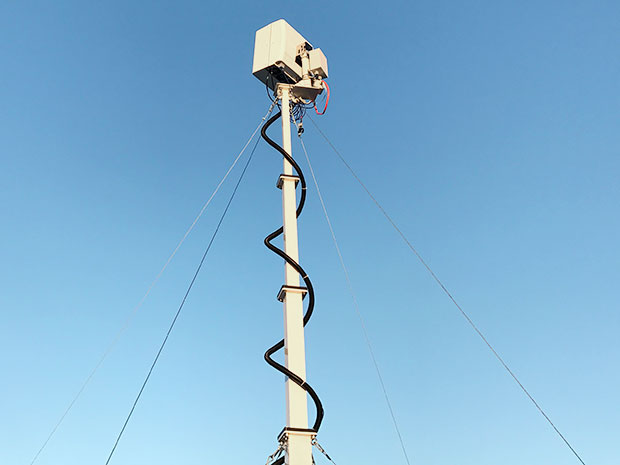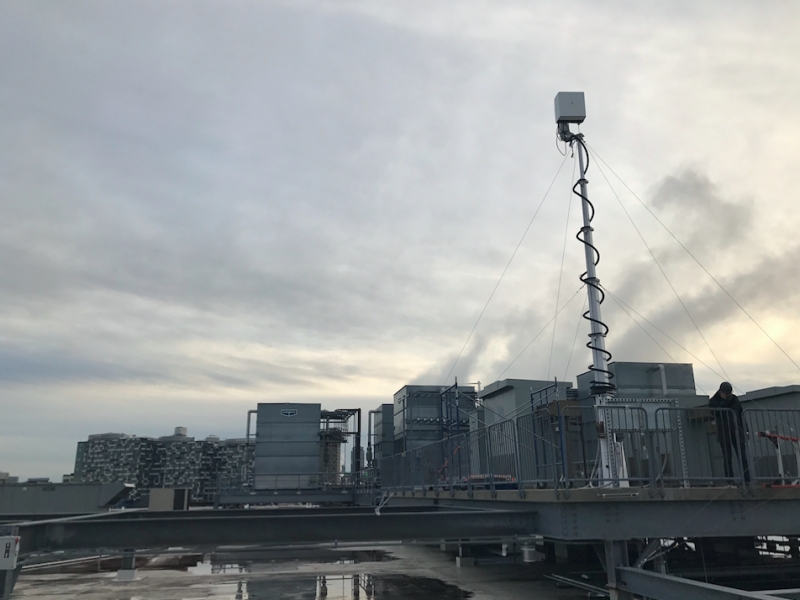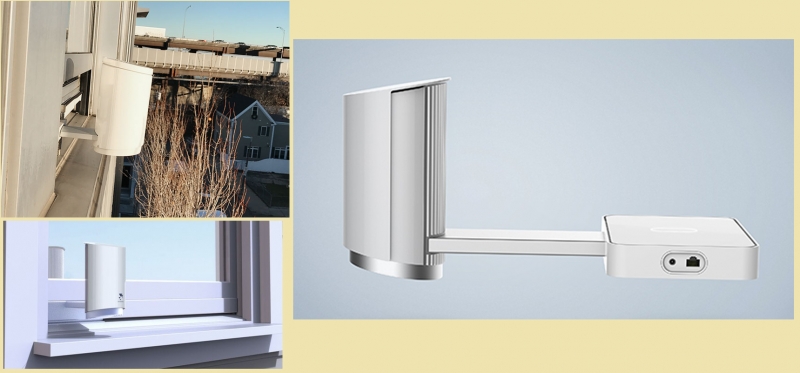Can the Starry Beam "kill" the fiber?

Starry Beam in Russian “Star Beam” is the name of the white box, the purpose of which is to replace fiber-optic cables. Starry Beam can air out gigabits of information using high-frequency millimeter-wave waves. This box is a kind of base station analogue that transmits millimeter waves to access points (Starry Points). The latter, in turn, process the signal into lower frequencies and send it directly to Internet users. Innovation allows users to watch television with 4K TV resolution.
Starry Beam is confident that their offspring can overshadow existing fiber optic networks, as it is cheaper, while providing a much higher level of service. According to the developers, the average user speeds will not be inferior to any existing broadband connection available today (200 - 300 Mbit / s). For comparison, the average speed in broadband networks in the USA is 55 Mbit / s.

Now the beta version of Starry Beam is working only for the benefit of a few test users, but at the end of the year several hundred subscribers will be connected to the network. Starry has already secured official support from the authorities and will test New York, Dallas, Seattle, San Francisco and Chicago. If the company's plans come true, Starry will be able to make a kind of revolution in the provision of high-speed Internet service to homes and businesses.
For the moment, let us throw aside the forecasts and all these “cabs” and “if only”, and talk about the Starry Beam technology. Millimeter waves are high-frequency radio pulses that occupy a portion of the electromagnetic spectrum that has not been previously used for consumer technology. While Wi-Fi, Bluetooth and mobile operators operate at frequencies below 6 GHz, Starry is currently testing its wireless solution at 38.2 GHz and 38.6 GHz (37 GHz and 40 GHz are planned for the future) .
Millimeter waves compared to LTE waves have a number of advantages and can presumably compete on equal terms with the Internet through optical fiber. The range of millimeter waves has a wider bandwidth - there are no signals (and interference) from smartphones, Wi-Fi equipment and various microwave devices. In addition, the installation of equipment for transmitting the signal through the air is much cheaper than laying cable into the ground. Such a situation is most likely characteristic of any country, including Russia.
Starry is genuinely confident that they can build a wireless network that costs only $ 25 for each connected home, served in areas with a population density of at least 1,500 homes per square mile. By comparison, laying fiber networks usually costs $ 2500 per house. Also, it should be borne in mind that the first earnings at Starry Beam will begin after entering the market by 3-5%, while earnings after the construction of the fiber optic network begin after 65%.

Design of subscriber equipment Starry Station
The main advantages of Starry Beam over competitors are the range used, deployment flexibility, and high scalability. Their base stations are capable of delivering a signal to any client within 1.5 kilometers. However, millimeter waves have their drawbacks. They better transmit the signal over short distances, which means that the urban environment is not quite suitable for them. Also, they cannot easily penetrate windows and buildings, or go around obstacles due to diffraction. They fade more in the rain and do not like any, even the most minimal obstacles. Therefore, the equipment Starry Point to ensure direct visibility makes the receiving part of the system "out".

Each Starry Beam has four active four-element phased antenna arrays. These are rows of small antenna elements. Interacting, they amplify the signal in the right direction. With their help, the base station transmits signals faster and with greater accuracy than ordinary stationary antennas. In fact, Starry was able to quickly and efficiently implement Massive MIMO, and about which integrators of LTE networks are just "talking".
From a practical point of view, using Massive MIMO means that the Starry Network equipment can serve Starry Point receivers installed directly on the walls of buildings. Radio signals can be relayed by Starry Point devices when they are reflected from buildings and other objects. Even in the absence of direct visibility, during beta testing, Starry equipment demonstrated possible data transfer rates of 200 Mbps under megapolis conditions.

With such capabilities, Starry is able to provide broadband service in no way inferior to LTE networks. The question is only in renting space for placing iron on infrastructure facilities. To cover the whole of Boston (~ 230 sq. Km.), The company will need to install three or four Starry Beam at 20-30 selected locations in the city. Each box will support about 1,000 users and provide 5 Gb / s throughput (i.e. a total of 15-20 Gb / s per deployment point). They expect this figure to improve to 45-50 Gbit / s per point by the end of 2017, as soon as the company updates its equipment to support the new 802.11ax wireless standard.
However, many wireless providers are already developing their own similar solutions. For example, the next acquisition of Google was the company Webpass, offering a solution similar to Starry. Verizon and AT & T said they will begin testing for broadband over the air this year. Thus, if Starry does not act quickly, larger companies may outrun them.
Prepared by: Dmitry Denisov
All Articles